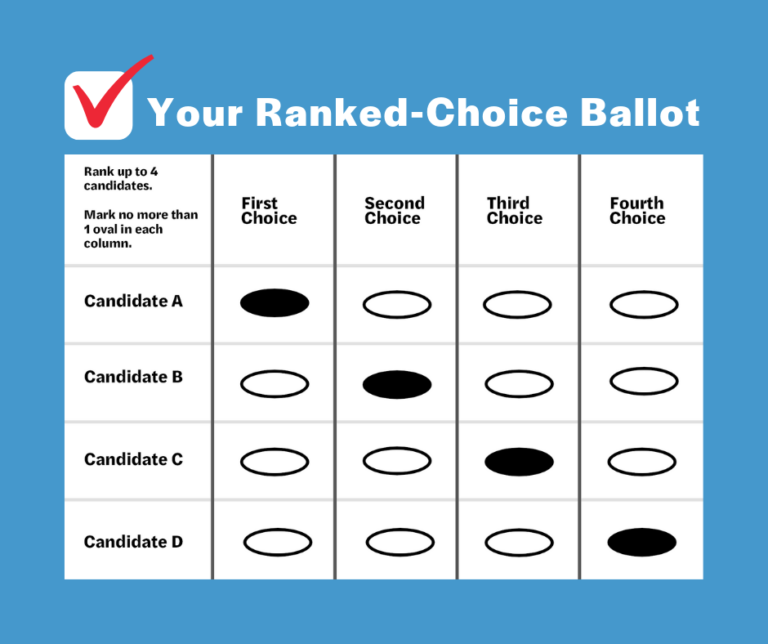
An example of a Ranked-Choice ballot / Contributed Photo
Given our current political climate, many voters are becoming disenfranchised by our current electoral system. This is especially true of moderates, who increasingly have to choose between one of two extremes on the political spectrum that they often do not agree with. While there are third-party candidates that often represent ideas that they believe in, many are afraid to at fear of wasting their vote. All this combined with what is shaping up to be another Trump vs. Biden election leaves many voters feeling like nothing will change, and their voices will continue to fall on deaf ears. So with all that said, the question still remains: how do we fix it? While there are a number of alternative electoral methods that we could use to make elections more fair and representative, the one that clearly rises above the rest is rank choice voting.
Ranked-choice voting (RCV) is a system by which voters rank the candidates based on which one they would prefer to be elected. This system of voting has numerous advantages over the current “first past the post” system where whoever has the most votes, even if it is not the majority, wins. The basic underlying tenet of RCV is that a candidate needs to have greater than 50% of the vote for them to be elected. In an election, if no candidate has greater than 50% of the vote, the votes for the worst performing candidate are redistributed to each voter’s second choice. This process continues to the second worst performing and so on until one candidate has more than half the vote.
While this may seem odd at first glance, it is a much fairer, more accurate method of voting. One of the key benefits of RCV is the fact that now people can vote for the candidate that they feel best represents the issues they care about, not just who they think could win. It also removes the need for runoff elections which can be very costly and time-consuming. Arguably the best part is the fact that there aren’t really any downsides. Counting votes could take slightly longer, but much less than the time taken for a runoff. Changing voting machines would cost some money, but many states already have the capability to use RCV in elections, they just have not implemented it. The only consequence of RCV is fairer, equal, and free elections where the voter gets more say in how their country is governed. These are some of the fundamental beliefs that our country is built on, and I believe that we should protect them dearly and use them to their fullest potential.
